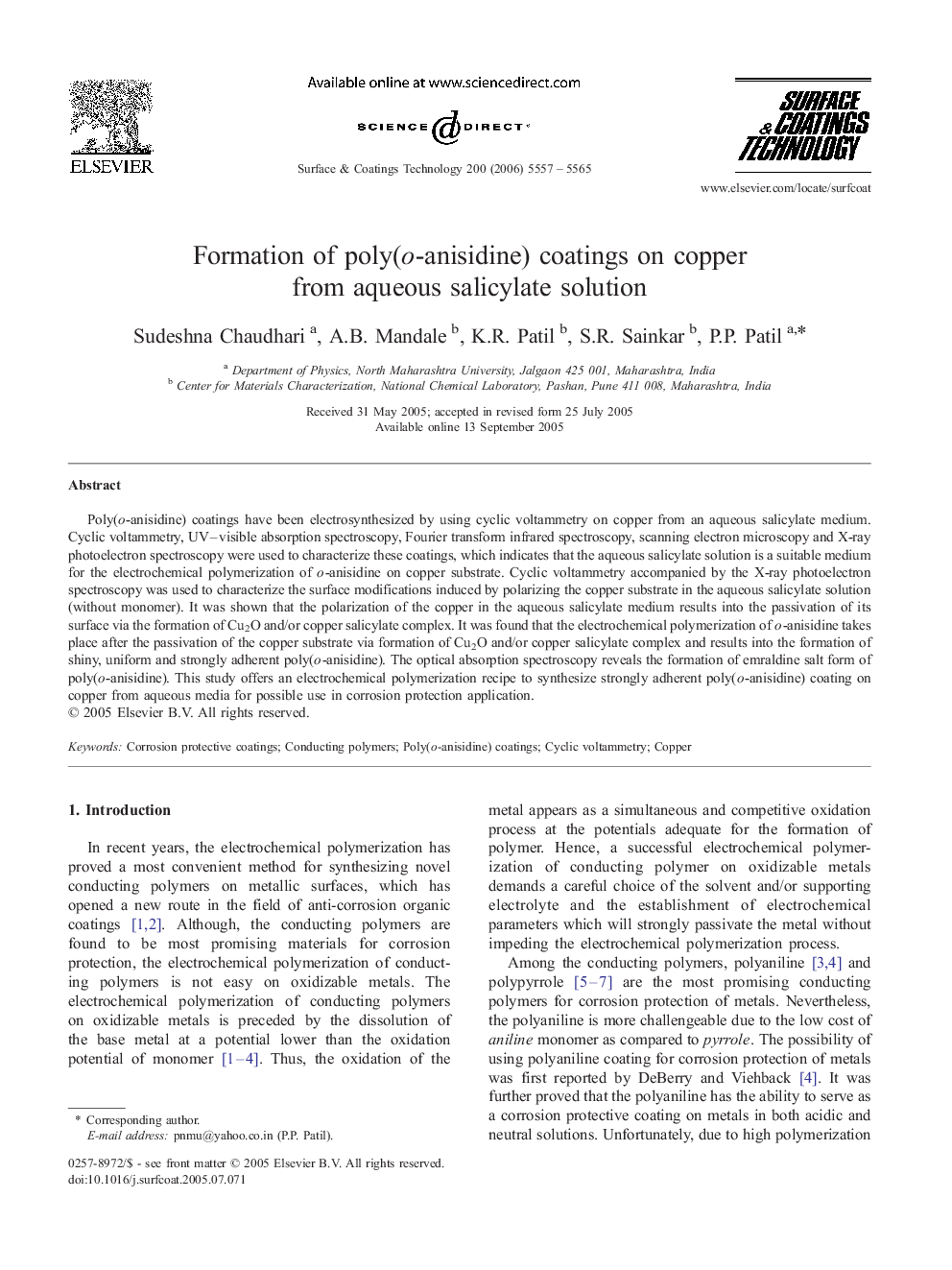| Article ID | Journal | Published Year | Pages | File Type |
|---|---|---|---|---|
| 1662797 | Surface and Coatings Technology | 2006 | 9 Pages |
Poly(o-anisidine) coatings have been electrosynthesized by using cyclic voltammetry on copper from an aqueous salicylate medium. Cyclic voltammetry, UV–visible absorption spectroscopy, Fourier transform infrared spectroscopy, scanning electron microscopy and X-ray photoelectron spectroscopy were used to characterize these coatings, which indicates that the aqueous salicylate solution is a suitable medium for the electrochemical polymerization of o-anisidine on copper substrate. Cyclic voltammetry accompanied by the X-ray photoelectron spectroscopy was used to characterize the surface modifications induced by polarizing the copper substrate in the aqueous salicylate solution (without monomer). It was shown that the polarization of the copper in the aqueous salicylate medium results into the passivation of its surface via the formation of Cu2O and/or copper salicylate complex. It was found that the electrochemical polymerization of o-anisidine takes place after the passivation of the copper substrate via formation of Cu2O and/or copper salicylate complex and results into the formation of shiny, uniform and strongly adherent poly(o-anisidine). The optical absorption spectroscopy reveals the formation of emraldine salt form of poly(o-anisidine). This study offers an electrochemical polymerization recipe to synthesize strongly adherent poly(o-anisidine) coating on copper from aqueous media for possible use in corrosion protection application.
